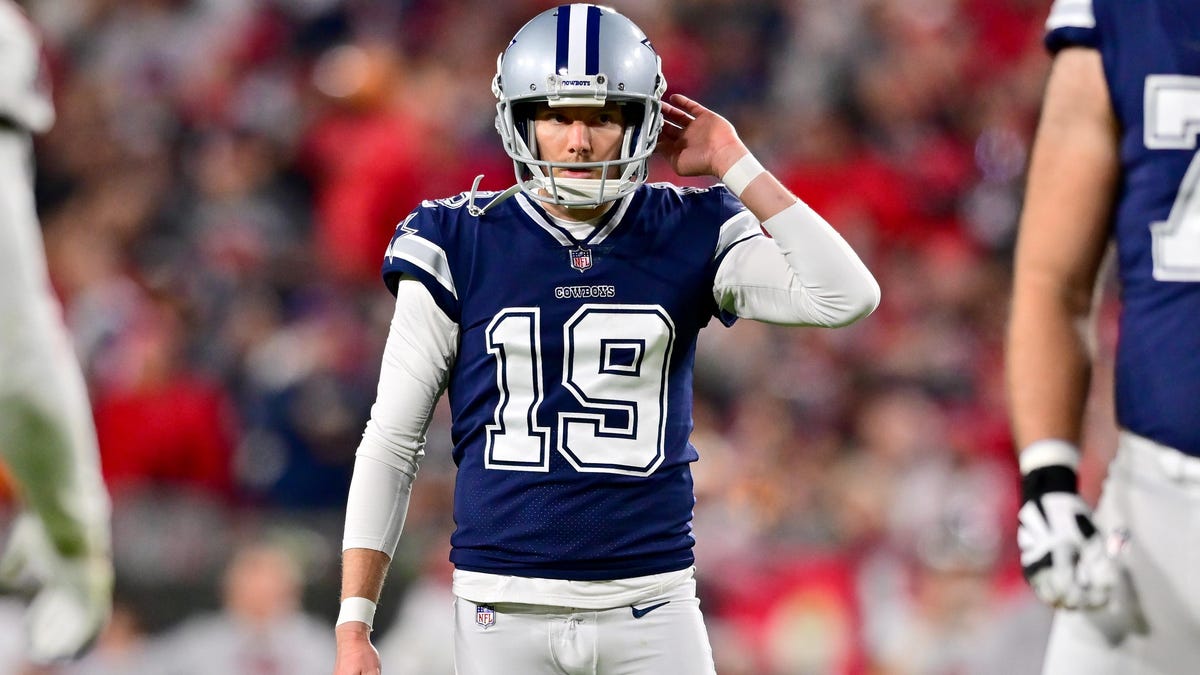Monday night, Dallas Cowboys’ kicker Brett Maher, a man who has made more 60-yard field goals than anyone in NFL history, went one for five on extra points. Because Tampa Bay basically had their asses handed to them by Dallas, (despite the ESPN crew’s insistence that “you can never count Tom Brady out!”), the topic of conversation online quickly devolved from talking about the game itself to talking about “the yips.” Before long, names like Chuck Knoblauch and Rick Ankiel were trending.
What are “the yips?”
The yips are well-known to baseball fans, but are probably actually more common in the game of golf. At the very least, there have been more studies and more science applied to golfers with the yips than baseball players.
The phrase “the yips” was invented by golfer Tommy Armour back in the mid-1900s, as he struggled to give a name to what was happening to his game. In baseball, the yips were, for a long time, commonly known as “Steve Blass Disease,” after the Pirates pitcher who notoriously struggled with wild pitches in the early 1970s. But then came Rick Ankiel, a pitcher who suddenly couldn’t get the ball over the plate and converted himself to an outfielder, Steve Sax and Chuck Knoblauch — second basemen who developed an inexplicable inability to throw the ball to first base, and Jon Lester, the Cubs’ former ace who suddenly could no longer throw the ball to first base – at least in a conventional manner.
The baseball yips have made their way into popular culture, as well. Chad Harbach’s popular 2011 novel The Art of Fielding tells the story of a generational talent at shortstop whose career is derailed by the yips. The book was okay, but nowhere near as good as the episode of Pysch where Sean gets the yips on the softball field (insert obligatory pineapple).
G/O Media may get a commission

Up to $100 credit
Samsung Reserve
Reserve the next gen Samsung device
All you need to do is sign up with your email and boom: credit for your preorder on a new Samsung device.
Can NFL kickers get the yips?
It’s not just baseball players who suffer from the yips, of course, any athlete who has to use fine motor skills (so, all of them), are easy prey. Golfers like Padraig Harrington, Ben Hogan, Sam Snead, and Tommy Miller have all suffered from yips. The NBA’s Nick Anderson lost his ability to hit free throws. Kickers Nick Folk and Roberto Aguayo suddenly couldn’t get a ball through the uprights to save their lives. Snooker and darts players, cricket bowlers, archers, tennis players – they’re just some of the elite athletes who have dealt with the yips.
In the past, “the yips” has always been equated with choking or buckling under pressure, but now scientific evidence is casting doubt on the idea that the problem is completely mental. At least not at by the time the yips has manifested into a major problem for an athlete.
So how do the yips start? Well, no one really knows. And there are different theories. Some athletes, like Steve Sax, can trace the start of the yips back to a single error. Opening day of 1983, Andre Dawson was on the base paths, and Sax attempted to throw him out at the plate, but he made an errant throw and the relay bounced off catcher Mike Soscia’s shin guard. Sax says he kept thinking about the error, over and over for days. And before he knew it, he couldn’t throw accurately anywhere on the diamond.
It’s possible, of course, that the yips really IS all in some player’s head. But scientific research over the last decade has indicated there’s something more to it. In fact, if you google “the yips,” one of the first things that comes up is The Mayo Clinic’s website with a formal definition. Here’s what it says:
“The yips are involuntary wrist spasms that occur most commonly when golfers are trying to putt. However, the yips can also affect people who play other sports — such as cricket, darts and baseball.
“It was once thought that the yips were always associated with performance anxiety. However, it now appears that some people have the yips due to a neurological condition affecting specific muscles (focal dystonia).”
But the yips aren’t always jerks of the wrist. It can also manifest as twitches, jerks, shakes, and jitters. Basically, it’s a loss of fine motor skills for reasons that aren’t well understood. Even more inexplicable is that the yips happen most often to veteran players with years of experience. In 1990, Mets catcher Mackey Sasser found one day that he could no longer throw the ball back to the pitcher without tapping his glove at least 4 times. By that time, Sasser was in his 4th year in the majors. Yankee Chuck Knoblauch had been in the league for 8 years by the time the yips caused him to he miss first base so badly he hit broadcaster Keith Olbermann’s mom in the stands.
One of the things that makes the yips so difficult to overcome is that they’re task-specific, or typically limited to a problem with a specific skill. NBA players who can’t hit free throws can still hit jumpers from the perimeter. Golfers who can no longer putt still hit drives well. Pitchers who can’t throw to first base are still able to strike out hitters at the plate with regularity. As Stephanie Apstein wrote in her excellent piece on the yips in Sports Illustrated, former MLB pitcher Jon Lester “(C)an paint the black with the game’s fiercest cutter, which heads for the lefthanded batter’s box before making a sharp right turn. He can curl a curveball past a bat, mix and locate his offerings with precision, and make them all look identical coming out of his hand. Lester is one of the best pitchers of his generation. So why can’t he turn 90 degrees to his left and do the same thing he does toward the plate?”
It’s difficult to say if the yips are more physical or more mental, though it’s clear that both the brain and the muscles are involved. Scientists have learned that while stress can make the yips worse, anxiety alone is not the root of the problem. sports psychologist Debbie Crews told the New Yorker. Crews explained that the yips are often present in a golfer’s swing whether they anxious or not, and even when the golfer is unaware of them. “In one of the studies we did,” Crews said, “we had people try seventy-five putts—from three feet, six feet, and eight feet—and some of them would do that and then walk away and say, ‘I’m sorry I didn’t yip for you today.’ And we had just watched their hand turn on every putt, and we could see it on the EMG. They had no idea, because they don’t feel it until it gets big. But it was still there.”
Perhaps the only thing that seems clear when it comes to the yips is that it originates, somehow, in the brain and goes on to physically affect an athlete’s muscles.
So how do sports psychologists begin treating an affliction that is so poorly understood?
Just like with the the yips themselves, there are a myriad of ideas – everything from medication to visualization. And scientists have also discovered that overthinking one aspect of whatever motor skill a player is struggling with, say, kicking a football at the right angle or judging the distance to shoot a basketball, can interfere with other aspects of the skill, like balance and grip. So relaxation, refocus, and re-learning mechanics can be part of alleviating the problem.
Some players, like Rick Ankiel and Chuck Knoblauch, were able to switch positions to alleviate the yips. Some players can work through their issues out of the public eye — an attempt to improve their mechanics away from prying eyes. But sometimes the yips can force a player out of the game.
Which brings us to pitcher Jon Lester, whose struggle with throwing to first base has been well-known since at least 2015, when he signed a massive 6-year, $155 million dollar deal with the Chicago Cubs. At first, Lester’s inability to throw to first base was a problem, as teams ran on him early and often. But over the years, Lester learned to adjust through a variety of tactics. Sometimes he ran towards the bag and underhanded the ball to first baseman Anthony Rizzo from a short distance away. He also resorted to tossing his entire glove, with the ball inside, to his first baseman on more than one occasion. Towards the end of his time with the Cubs, Lester focused on one-hopping or bounce-passing the ball to first – more of a basketball pass than a baseball play. But it worked.
Of course, Lester didn’t have to throw to first every play, and, for that reason, he was able to find ways to compensate for this small part of his game. When a pitcher can no longer locate his pitches over the plate, or a shortstop can’t accurately throw to first, it’s a much bigger problem.
As of now, there is no diagnostic test for the yips, but with so many researchers taking a scientific look at the phenomenon, it could be just a matter of time before we have an integrated medical and psychological treatment for the yips that will work for everyone. And not just athletes. Writers, musicians, artists — basically anyone who works with fine motor skills — have also been known to suffer from the yips.
But for now, the words “the yips” strike terror into the hearts of professional athletes, with every pro hoping that the worst thing that can happen to a player’s game won’t happen to them.



